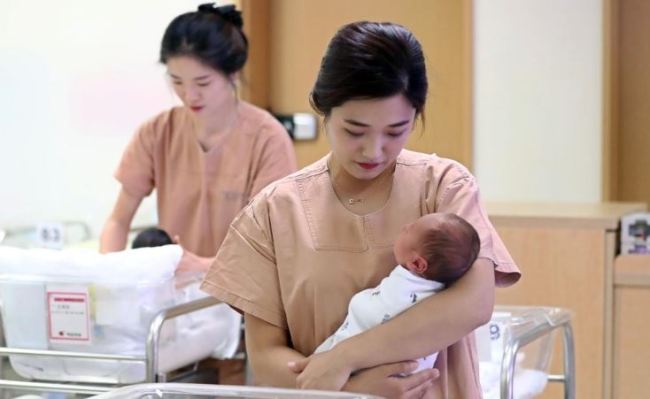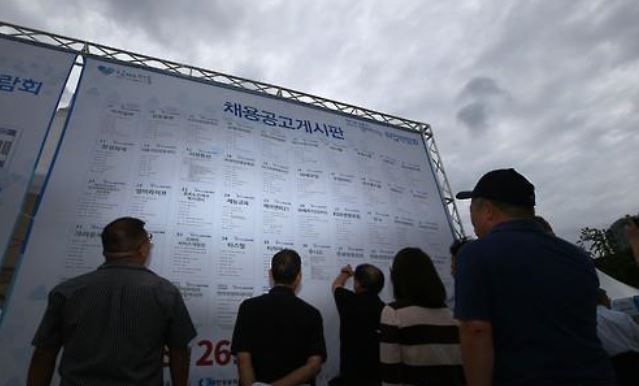Govt. to focus on boosting job creation, low birth rate in mapping out 2019 budget
By YonhapPublished : March 26, 2018 - 10:05
The government's fiscal policy for next year will be centered on boosting job creation and innovative growth, while at the same time tackling South Korea's low birthrate trend and aging society, the finance ministry said Monday.
The 2019 budget guidelines, which were approved by the Cabinet, are also aimed at improving fiscal efficiency and allocating government funds to pressing issues, according to the Ministry of Strategy and Finance.
The finance ministry said it will expand government spending in four key sectors -- boosting job creation for young people, promoting innovative growth, strengthening the country's social security system, and overcoming the low birthrate and the aging society -- that are critical for sustainable growth.

It will also streamline all subsidy programs and remove redundant plans in order to increase efficiency in state budget spending.
The money saved will be used in four core sectors that the country should prop up to enhance its competitiveness, the ministry said.
The ministry also said it would raise the growth of its budget spending to better cope with a series of chronic problems, such as the low birthrate and low economic participation by women.
According to the ministry, the growth of budget spending is set at 7.1 percent for 2018 and 5.7 percent for 2019. During the 2020-21 period, the expansion rate is set in the roughly low 5 percent range.
A 5.8 percent expansion of budget spending is set for the next five years, but the government is working to review the rate with the aim of resolving various issues.
The finance ministry will then examine all plans and submit its 2018 budget proposal to the National Assembly on Sept. 2.
Earlier this month, the government unveiled a set of measures, including bolder financial and tax incentives, and the use of an extra budget, to tackle high youth unemployment, with the aim of stabilizing the country's youth jobless rate to around the 8 percent range by 2021.

Youth unemployment has been accelerating due to structural changes in the industrial, educational and labor sectors, and because of lower demand for new workers.
In January this year, President Moon Jae-in called for an all-out effort to create new quality jobs for young people and said the country's high youth jobless rate is a national disaster.
Creating quality jobs, especially for the young, was one of Moon's key election pledges. The president has promised to add 810,000 new jobs in the public sector during his single five-year term, which ends in May 2022.
Data showed that South Korea's total fertility rate -- the average number of children a woman bears in her lifetime -- stood at a record low of 1.05 in 2017, compared with 1.65 in 1993.
A growing number of South Koreans have fewer babies, due mainly to financial constraints amid a prolonged economic slowdown.
Also, the country is becoming more aged as the life expectancy of babies born in 2016 averaged 82.4 years, up slightly from the previous year's 82.1 years. Baby boys and girls were expected to live 79.3 years and 85.4 years, respectively.
The portion of the South Korean population over 65 accounted for 13.8 percent of the total in 2017, higher than 13.1 percent for those aged 14 or younger, Statistics Korea said. It said the portion of people aged over 65 could reach 26.1 percent of the population by 2032 and 41 percent by 2060. (Yonhap)







![[KH Explains] Hyundai's full hybrid edge to pay off amid slow transition to pure EVs](http://res.heraldm.com/phpwas/restmb_idxmake.php?idx=644&simg=/content/image/2024/04/18/20240418050645_0.jpg&u=20240419100350)







![[From the Scene] Monks, Buddhists hail return of remains of Buddhas](http://res.heraldm.com/phpwas/restmb_idxmake.php?idx=652&simg=/content/image/2024/04/19/20240419050617_0.jpg&u=20240419175937)

![[KH Explains] Hyundai's full hybrid edge to pay off amid slow transition to pure EVs](http://res.heraldm.com/phpwas/restmb_idxmake.php?idx=652&simg=/content/image/2024/04/18/20240418050645_0.jpg&u=20240419100350)

![[Today’s K-pop] Illit drops debut single remix](http://res.heraldm.com/phpwas/restmb_idxmake.php?idx=642&simg=/content/image/2024/04/19/20240419050612_0.jpg&u=)